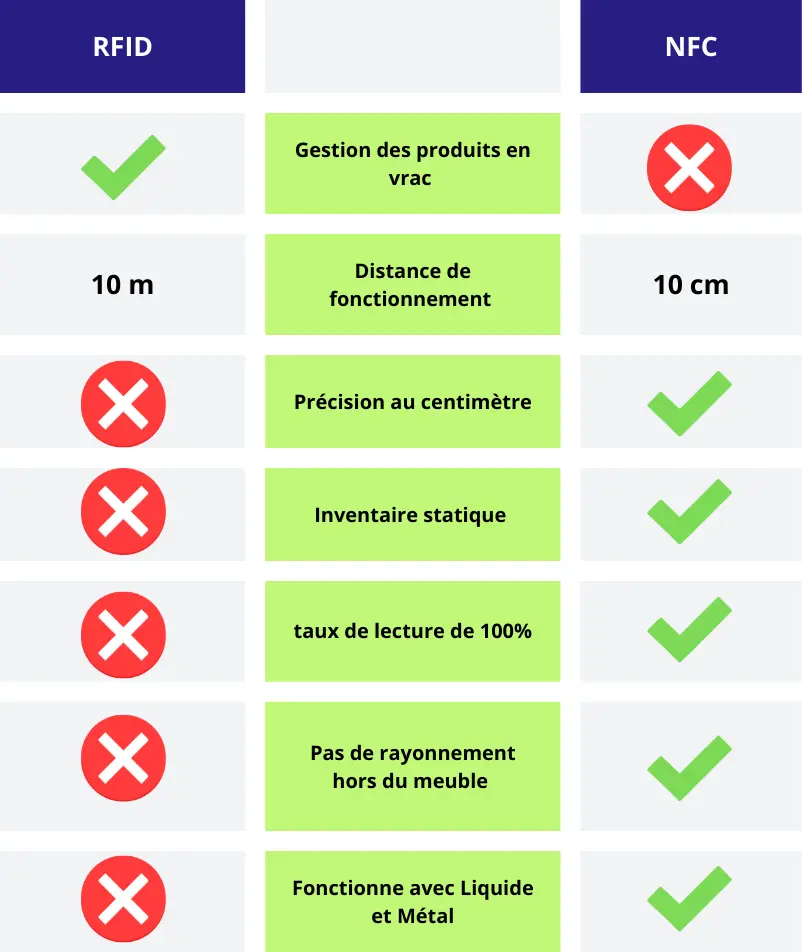La différence entre RFID et NFC
Le NFC (Near Field Communication) fait partie de la grande famille des technologies RFID (Radio Frequency Identification). Ce sont deux systèmes d’identification par radiofréquence sans contact, mais avec des usages, portées et niveaux de sécurité différents. On en vient alors à se demander quelle est la différence entre RFID et NFC ?
La portée : un critère clé
- RFID : fonctionne à moyenne ou longue distance (jusqu’à plusieurs mètres), souvent utilisée pour des lectures de masse.
- NFC : au contraire, fonctionne à courte portée (quelques centimètres), ce qui permet une lecture précise et contrôlée, idéale pour les environnements sensibles ou les usages unitaires.
Sécurité et contrôle
Le NFC permet une authentification plus sécurisée :
- Chaque interaction est déclenchée volontairement (ex. via un smartphone ou un lecteur de proximité),
- Les données peuvent être chiffrées (cryptées) pour sécuriser les échanges,
- Idéal pour les applications de traçabilité, de contrôle d’accès ou de lutte contre le marché gris.
Compatibilité mobile native
Contrairement à la plupart des technologies RFID, le NFC est intégré directement dans la majorité des smartphones modernes, ce qui permet une interaction immédiate sans équipement supplémentaire. C’est ce qui permet aux utilisateurs de "taper" un tag NFC avec leur téléphone pour consulter les informations produit.
Pourquoi Centiloc a choisi le NFC ?
Chez Centiloc, nous avons fait le choix du NFC pour sa précision, sa sécurité, et sa facilité d’usage, notamment dans des environnements complexes comme le retail, les laboratoires ou les chaînes logistiques sensibles.
Il nous permet de proposer une solution fiable, discrète et accessible, que ce soit pour l’inventaire automatisé, la traçabilité des produits, ou la détection en temps réel.
En résumé


